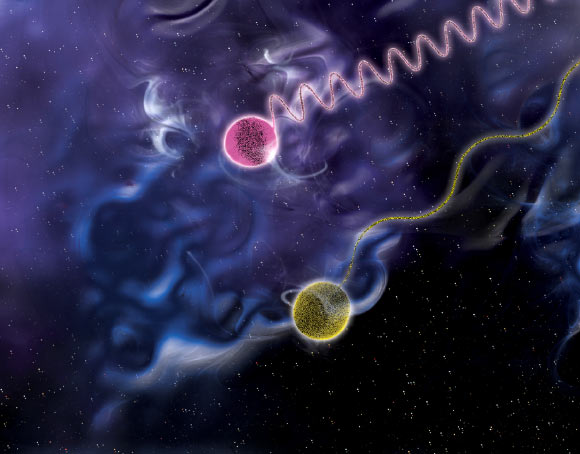The future of computation is bright — literally.
Researchers from the Harvard John A. Paulson School of Engineering and Applied Sciences (SEAS), in collaboration with researchers at McMaster University and University of Pittsburgh, have developed a new platform for all-optical computing, meaning computations done solely with beams of light.
“Most computation right now uses hard materials such as metal wires, semiconductors and photodiodes to couple electronics to light,” said Amos Meeks, a graduate student at SEAS and co-first author of the research. “The idea behind all-optical computing is to remove those rigid components and control light with light. Imagine, for example, an entirely soft, circuitry-free robot driven by light from the sun.”
These platforms rely on so-called non-linear materials that change their refractive index in response to the intensity of light. When light is shone through these materials, the refractive index in the path of the beam increases, generating its own, light-made waveguide. Currently, most non-linear materials require high-powered lasers or are permanently changed by the transmission of light.
Here, researchers developed a fundamentally new material that uses reversible swelling and contracting in a hydrogel under low laser power to change the refractive index.
The hydrogel is composed of a polymer network that is swollen with water, like a sponge, and a small number of light-responsive molecules known as spiropyran (which is similar to the molecule used to tint transition lenses). When light is shone through the gel, the area under the light contracts a small amount, concentrating the polymer and changing the refractive index. When the light is turned off, the gel returns to its original state.
When multiple beams are shone through the material, they interact and affect each other, even at large distances. Beam A could inhibit Beam B, Beam B could inhibit Beam A, both could cancel each other out or both could go through — creating an optical logic gate.
“Though they are separated, the beams still see each other and change as a result,” said Kalaichelvi Saravanamuttu, an associate professor of Chemistry and Chemical Biology at McMaster and co-senior author of the study. “We can imagine, in the long term, designing computing operations using this intelligent responsiveness.”
“Not only can we design photoresponsive materials that reversibly switch their optical, chemical and physical properties in the presence of light, but we can use those changes to create channels of light, or self-trapped beams, that can guide and manipulate light,” said co-author Derek Morim, a graduate student in Saravanamuttu’s lab.
“Materials science is changing,” said Joanna Aizenberg, the Amy Smith Berylson Professor of Materials Science at SEAS and co-senior author of the study. “Self-regulated, adaptive materials capable of optimizing their own properties in response to environment replace static, energy-inefficient, externally regulated analogs. Our reversibly responsive material that controls light at exceptionally small intensities is yet another demonstration of this promising technological revolution.”
This research was published in the Proceedings of the National Academy of Sciences. It was co-authored by Ankita Shastri, Andy Tran, Anna V. Shneidman, Victor V. Yashin, Fariha Mahmood, Anna C. Balazs. It was supported in part by the US Army Research Office under Award W911NF-17-1-0351 and by the Natural Sciences and Engineering Research Council, Canadian Foundation for Innovation.















